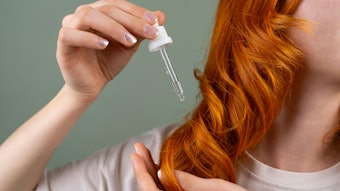Environmental awareness is well established in bath and body, and the growth rate of natural and sustainable products in the segment is increasing more rapidly than in any other. Trend setters have included Bath and Body Works, The Body Shop, Aveda, Origins and L’Occitane, and many of the cosmetic giants purchased natural boutique lines that demonstrate creativity in using environmentally friendly naturals and botanicals.
Fragrance dominates the bath and body world, and is often the raison d’être for the purchase of the product. The fragrance may also transcend the function of the product, and—as bathing and hygiene become a daily function in underdeveloped countries to create new, booming markets—bath and body products become the medium to dispense the fragrance experience.
This market boom and the well-established trend for naturals, too, are linked. If the base notes of the natural raw materials in a formula are unpleasant, the consumer will experience repulsion rather than a pleasurable experience. Even functional products that claim no fragrance or perfume often contain odor masquants, such as musk fixatives, to cover malodors. It’s useful to remember, in this context, that perfumery sprang up as a side business to the tanning and glove industry in the south of France, and fragrance remains one of the most important tools in selling bath and body products across markets and in accordance with trends.
Fragrance houses are constantly challenged to come up with new raw materials to capture exotic plant materials and serve both the overarching trends and the trends within trends.
The Challenge
Europeans have long used natural essential oils for their healing, soothing and rejuvenating effects. Lavender, chamomile, basil, sage, rosemary and mint all provide aromatic and therapeutic effects, and the phenomenal success possible with natural essential oils is documented. Perfumer Olivier Baussan, who began L’Occitane, wished to capture the aroma of the blooming plants in the south of France. He went into the fields with his homemade extraction device, and filled the head space of his vessel toward recreating the beauty of the natural essences. He was a pioneer in head space technology and capturing the essence of the blooming flower, and his products have the most exquisite refinement both in formulation combinations and in blends of natural essential oils along with synthetics. There may be some products that contain only natural extracts, such as those in the mint and camphor family, but stability and interaction with other base materials can have the unintended effect of creating fragrance degradation.
Perfumers strive to achieve natural smelling products in keeping with the natural trend, but what consumers often fail to realize is that there can be far more allergens and irritating trace ingredients contained in natural products. Solubilizers and diluents are needed to meld final fragrance oil, and the natural fragrance labeling requirements will not allow for this. Many fragrance houses are working to solve these problems to satisfy the fragrance-free labeling requirements by 2010.
Working With Mother Nature
Must we mimic Mother Nature or work within the confines of all that is sourced from her? Yes, to both. Crabtree & Evelyn’s recently launched Aromatherapy Distillations, a collection designed to combine the benefits of essential oils (including lavender, rosewood, vanilla, lemon, coriander body, spearmint, eucalyptus and lime) with globally sourced natural ingredients to create a holistic approach to care for the senses and skin is an apt example of a successful working relationship with nature. The collection is grouped into three sensory benefits (relaxing, revitalizing and purifying) designed to help women enjoy moments of serenity, energy and clarity.
There are known psychological effects attributed to the inhalation of naturals. In laboratory tests, blood pressure rates are measured in combination with the inhalation experience. The best effects are found by combining synthetic and natural materials to produce feelings or reactions of warmth, beauty and freshness. This combination should marry on the skin but remain subtle.
The challenge to the esthetic formulator is to create that winning recipe, but there are an infinite number of combinations that might provide the winning product for the next trend. It is up to the creativity of the formulator and marketer to catch the eye of the consumer and deliver that promise.
Efficacy and Intertwining Scent
The efficacy of bath and body products is still dependent on the formulator’s art, both in cosmetic chemistry and in perfumery. How the story of ingredients and the romance associated with them and the fragrance become intertwined is definitely a challenge for marketers. But never underestimate the discernment of the consumer in judging the quality of that formulation and its total enhancement experience. The first invitation to try that product is the fragrance, which is also how consumers judge its perceived effectiveness, making fragrance integral to the function story of the product.
Nancy C. Hayden is a chemist and a pharmacist with more than 30 years in the fragrance industry. She worked as a nose for Jovan from the company’s beginnings and as fragrance director for Jovan Beecham until 1988. Currently, she is a consultant to the fragrance and cosmetic industries.

!['Snoopy and Woodstock are cherished [characters] across generations and pairing them with our most-loved body care essentials creates a collection that feels classic with a modern twist. This launch is about celebrating our community with something unforgettable while starting an exciting new era for the brand,' said Luis Garcia, Chief Marketing Officer.](https://img.gcimagazine.com/mindful/allured/workspaces/default/uploads/2025/10/tree-hut-peanuts-fullcollection-fall26-1x1-1253.lGcuurUszp.jpg?auto=format%2Ccompress&fit=crop&h=191&q=70&w=340)








